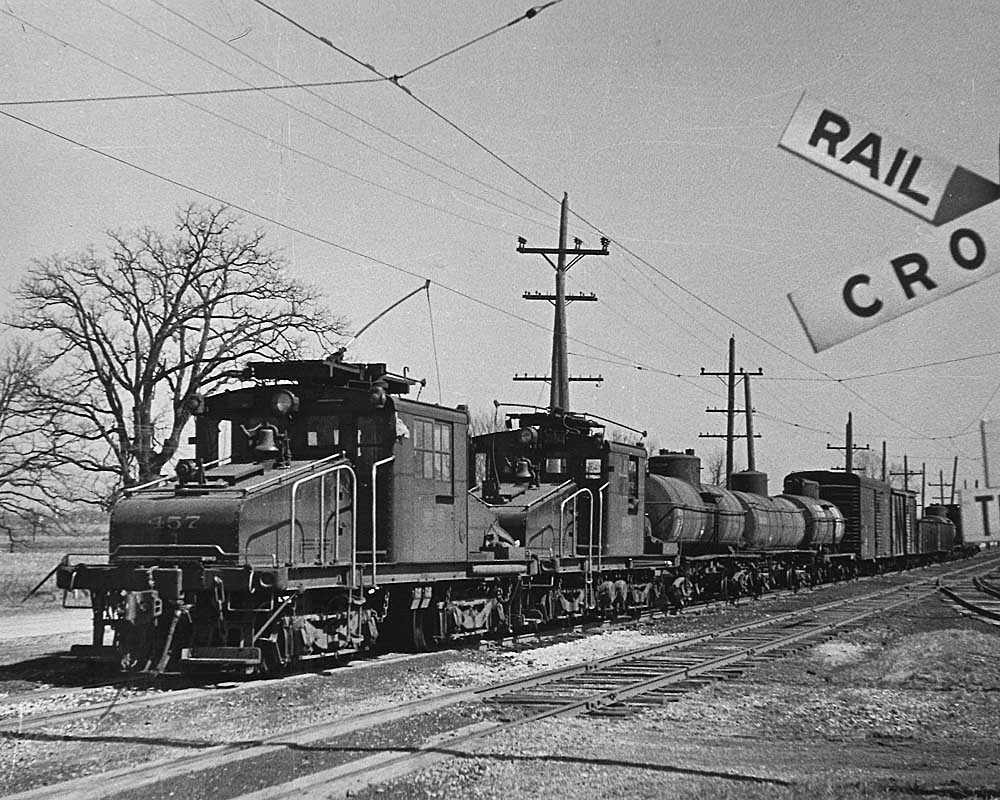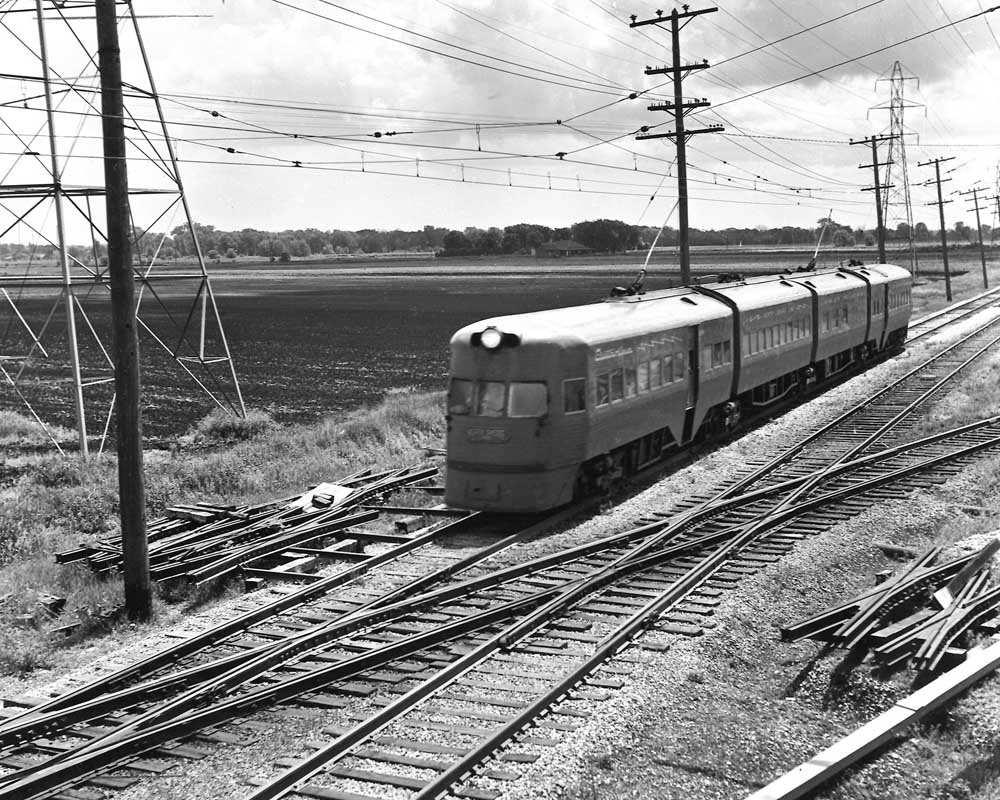Chicago North Shore & Milwaukee history is tied to the transit needs of Chicago and Milwaukee.

In 1891 the Waukegan & North Shore Rapid Transit Co. was incorporated — a trolley line for the city of Waukegan, Ill., on the shore of Lake Michigan, 36 miles north of Chicago. In 1897, by which time it reached 6 miles south to Lake Bluff, it was sold and reorganized as the Chicago & Milwaukee Electric Railway. The line was extended south through the towns along the lake to Evanston, where it connected with a branch of the Milwaukee Road to Chicago. It also built a line west from Lake Bluff to Libertyville in 1903 and to what is now Mundelein in 1905.
Construction northward from Lake Bluff began in 1904 following steam-railroad standards of grade and curvature — the line to Evanston was typical of suburban trolley line construction. In December 1905 the line reached Kenosha, Wis., where it connected with the Milwaukee Light, Heat & Traction Co. At the same time the Milwaukee Road connection at Evanston was replaced by the Northwestern Elevated Railroad. This meant an all-electric Chicago to Milwaukee trip was now possible. It took five hours, considerably more than on the parallel Chicago & North Western or Milwaukee Road, but the fare was less. The Chicago & Milwaukee pushed its own rails north, reaching Milwaukee (and bankruptcy) in 1908. Operation began, nonetheless, and immediately included limited-stop express trains with parlor car and dining service.
Enter Samuel Insull in Chicago North Shore & Milwaukee history
In 1916 the Insull interests purchased the railroad, reorganized it as the Chicago North Shore & Milwaukee Railroad, and immediately began a modernization program. Business nearly doubled during the first year of new management. In 1919 the North Shore made arrangements to operate to the Loop in downtown Chicago over the rails of the elevated (the “L”) and constructed new terminals in Chicago and Milwaukee. Business flourished on the 85-mile route, even with the competition of two very healthy steam roads. The North Shore quickly developed into the definitive interurban.
In the early 1920s traffic between Waukegan and Evanston reached the saturation point of the line, which was handicapped by stretches of street running. The railroad saw that a new line a few miles west along the right of way of one of Insull’s power companies would be cheaper than just the construction of temporary track needed to rebuild the existing line. The first 5-mile portion of the new Skokie Valley Line was opened in 1925 and was operated by Chicago Rapid Transit, which continued to operate local service until 1948. The entire line opened in 1926 and became the new main route. The Shore Line, as the original route was termed, was relegated to local service. The new route was much faster, materially helping the North Shore compete with the steam roads. North Shore quickly became America’s fastest interurban. In addition, the North Shore emphasized its parlor and dining service—it was perhaps the only interurban to have much success with such operations.
Electroliners and abandonment

In 1931 the Great Depression finally got a grip on the North Shore. The line declared bankruptcy in September 1932. Even so, the road continued to operate fast, frequent trains. It cooperated with parallel Chicago & North Western and public agencies in a line relocation project through Glencoe, Winnetka, and Kenilworth, eliminating grade crossings and street running. In 1939 the North Shore ordered a pair of streamliners from St. Louis Car Co.: the Electroliners. No other trains of the streamliner era had such disparate elements in their specifications: 85-mph top speed (North Shore’s schedules called for start-to-stop averages of 70 mph) and the ability to operate around the 90-foot radius curves of the Chicago “L.” World War II brought increased traffic, and the North Shore emerged from bankruptcy in 1946 — just as competition from automobiles and strikes by employees began to cut into the road’s business. Waukegan and North Chicago streetcar services were taken over by buses in 1947, dining car service on trains other than the Electroliners was dropped in 1949, local streetcar service in Milwaukee was discontinued in 1951, and the Shore Line was abandoned in 1955.
By then the North Shore was owned by the Susquehanna Corp., a holding company that found the road’s losses useful for tax purposes — ditto for tax credits from abandonment. In 1959 an Interstate Commerce Commission examiner recommended abandonment, and the 1960 completion of the Edens Expressway took passengers away by the thousands. Protests and renewed petitions prolonged the struggles of the line until Jan. 21, 1963. Thus ended Chicago North Shore & Milwaukee history proper.
North Shore’s freight business consisted of less-than-carload traffic carried in merchandise despatch cars (motor baggage cars) and intermediate traffic, received from one steam road and delivered to another. North Shore inaugurated piggyback service in 1926, but improved parallel highways led to its discontinuance in 1947.
Remnants of the North Shore exist. Many of its standard steel passenger cars are in trolley museums across the country, and the two Electroliners are at Illinois Railway Museum at Union, Ill., and Shade Gap Electric Railway, Orbisonia, Pa., after several years of service on the Philadelphia & Western. North Shore’s right of way is still visible, and part of the Shore Line has become a bicycle path. Chicago Transit Authority restored service to the south end of the Skokie Valley Route in 1964 — the Skokie Swift, a nonstop service between Howard Street in Chicago and Dempster Street in Skokie.














Great article
A great read! Thanks for sharing.